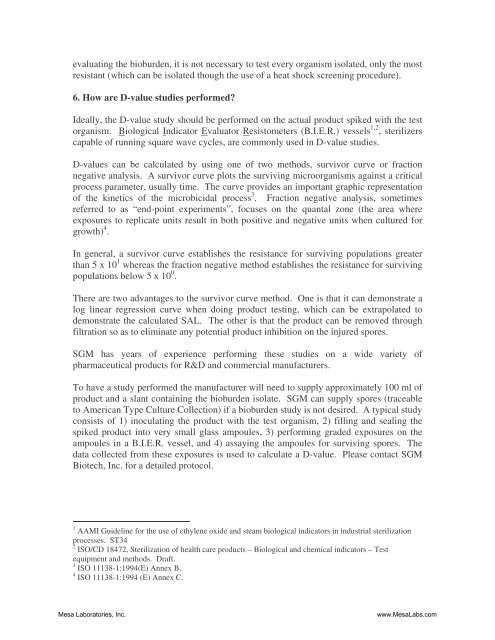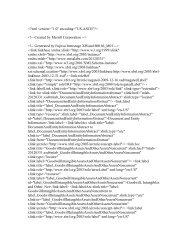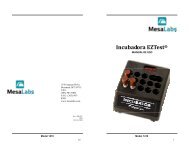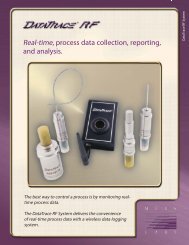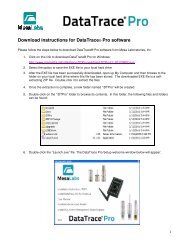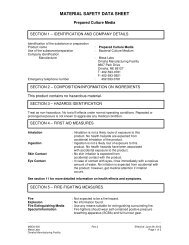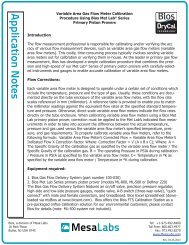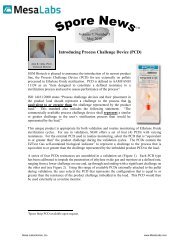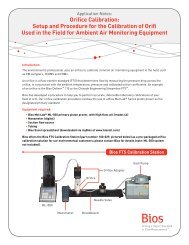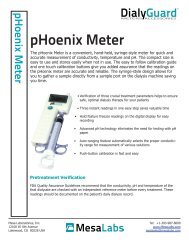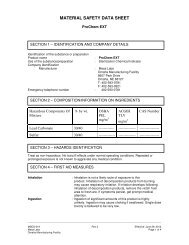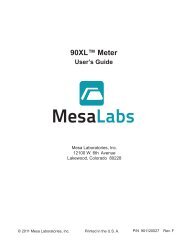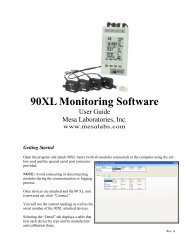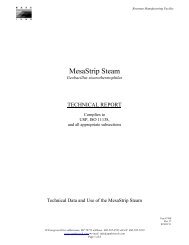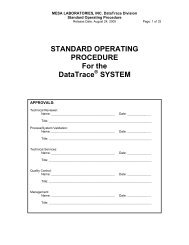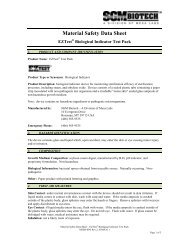Sporenews v1 n3 D-value Studies - Mesa Labs
Sporenews v1 n3 D-value Studies - Mesa Labs
Sporenews v1 n3 D-value Studies - Mesa Labs
Create successful ePaper yourself
Turn your PDF publications into a flip-book with our unique Google optimized e-Paper software.
evaluating the bioburden, it is not necessary to test every organism isolated, only the most<br />
resistant (which can be isolated though the use of a heat shock screening procedure).<br />
6. How are D-<strong>value</strong> studies performed?<br />
Ideally, the D-<strong>value</strong> study should be performed on the actual product spiked with the test<br />
organism. Biological Indicator Evaluator Resistometers (B.I.E.R.) vessels 1,2 , sterilizers<br />
capable of running square wave cycles, are commonly used in D-<strong>value</strong> studies.<br />
D-<strong>value</strong>s can be calculated by using one of two methods, survivor curve or fraction<br />
negative analysis. A survivor curve plots the surviving microorganisms against a critical<br />
process parameter, usually time. The curve provides an important graphic representation<br />
of the kinetics of the microbicidal process 3 . Fraction negative analysis, sometimes<br />
referred to as “end-point experiments”, focuses on the quantal zone (the area where<br />
exposures to replicate units result in both positive and negative units when cultured for<br />
growth) 4 .<br />
In general, a survivor curve establishes the resistance for surviving populations greater<br />
than 5 x 10 1 whereas the fraction negative method establishes the resistance for surviving<br />
populations below 5 x 10 0 .<br />
There are two advantages to the survivor curve method. One is that it can demonstrate a<br />
log linear regression curve when doing product testing, which can be extrapolated to<br />
demonstrate the calculated SAL. The other is that the product can be removed through<br />
filtration so as to eliminate any potential product inhibition on the injured spores.<br />
SGM has years of experience performing these studies on a wide variety of<br />
pharmaceutical products for R&D and commercial manufacturers.<br />
To have a study performed the manufacturer will need to supply approximately 100 ml of<br />
product and a slant containing the bioburden isolate. SGM can supply spores (traceable<br />
to American Type Culture Collection) if a bioburden study is not desired. A typical study<br />
consists of 1) inoculating the product with the test organism, 2) filling and sealing the<br />
spiked product into very small glass ampoules, 3) performing graded exposures on the<br />
ampoules in a B.I.E.R. vessel, and 4) assaying the ampoules for surviving spores. The<br />
data collected from these exposures is used to calculate a D-<strong>value</strong>. Please contact SGM<br />
Biotech, Inc. for a detailed protocol.<br />
1 AAMI Guideline for the use of ethylene oxide and steam biological indicators in industrial sterilization<br />
processes. ST34<br />
2 ISO/CD 18472, Sterilization of health care products – Biological and chemical indicators – Test<br />
equipment and methods. Draft.<br />
3 ISO 11138-1:1994(E) Annex B.<br />
4 ISO 11138-1:1994 (E) Annex C.<br />
<strong>Mesa</strong> Laboratories, Inc.<br />
www.<strong>Mesa</strong><strong>Labs</strong>.com


